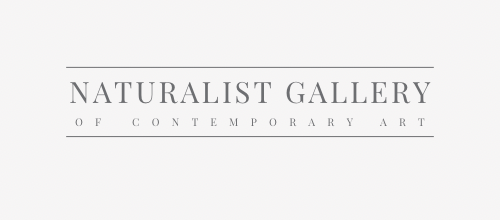In the realm of acrylic painting, texture is not just an element; it's a gateway to depth, emotion, and expression.
To create texture in acrylic paintings, use impasto, palette knives, modeling paste, and household items for diverse effects. Experiment with techniques like sgraffito, spattering, and color blending. Layer thick paint and let each layer dry for depth.
This guide, designed for artists and enthusiasts alike, dives into the multifaceted world of texture in acrylic paintings, offering both innovative ideas and practical techniques.
Explore our curated selection of contemporary artists from around the globe.
Naturalist Gallery offers artist representation internationally. Apply your art.
Techniques for Creating Texture
-
Pastel and Impasto Fusion
- Technique: Blend impasto with acrylic paints.
- Result: Achieve a dreamy, textured finish.
- Application: Use impasto to add depth and play with pastel shades for a whimsical feel.
-
Palette Knife Adventures
- Method: Employ a palette knife for texturing.
- Materials: Combine impasto or dimension acrylics.
- Tip: A palette knife offers a unique texture, perfect when brushes aren't available.
-
Shaping Imagination
- Medium: Utilize modelling paste.
- Creative Process: Experiment with different shapes in paste, then overlay with acrylic paint.
- Inspiration: Explore organic forms like waves and geometric patterns for dynamic textures.
-
Color Blocking Technique
- Strategy: Use impasto for blocking colors.
- Approach: Start with a rough sketch, then apply colors from dark to light.
-
Limited Palette Texture
- Challenge: Restrict color choices.
- Technique: Create texture using minimal colors, focusing on the interplay of textures and hues.
-
Terracotta Textures
-
Highlighting with Texture
- Idea: Paint over dried textures to accentuate specific areas.
- Materials: Mix impasto and acrylics for a layered effect.
-
Crackle Paste Exploration
- Medium: Apply crackle paste for a unique texture.
- Effect: Achieve a weathered look, ideal for landscapes or vintage styles.
-
Texture as a Focal Point
- Concept: Use texture to highlight key elements.
- Example: Emphasize waves in a seascape using modelling paste.
-
Dreamy Color Blends
- Technique: Incorporate household items for texture.
- Colors: Experiment with soft, intermingling colors like blues, pinks, and purples.
-
Gradient Textures
- Method: Blend colors using impasto.
- Application: Create gradients with textures for a subtle yet impactful effect.
-
Mixed Media Texturing
- Approach: Combine various materials.
- Benefit: Mixed media can add unexpected and engaging textures.

Pro Tips for Textured Paintings
- Choosing Paints: Opt for acrylics for their adaptability. Thicken them with gels or mediums for added texture.
- Essential Materials: Include heavy body acrylic gel, a sturdy canvas, and a palette knife in your toolkit.
- Priming: Always prime your canvas with gesso for better texture adherence.
- Impasto Technique: Layer paint thickly to retain brush or knife marks, enhancing the texture.
- Drying Time: Allow ample drying time for textured works, as they may take longer than flat paintings.
Advanced Texture Techniques
- Using Painting Knives: Experiment with various blade shapes for diverse textures.
- Spattering and Splattering: Utilize tools like toothbrushes or specialized brushes for spatter effects.
- Extruding Paint: Use nozzles or icing tools for raised lines and shapes.
- Sponging Techniques: Apply paint with sponges for natural, organic textures.
- Silicone Shapers: Manipulate wet acrylics with silicone tools for unique textures.
- Sgraffito: Scratch into wet paint to reveal layers underneath, adding depth and interest.
Apply for Naturalist Gallery Artist Representation.
Texturing in acrylic painting opens a vast landscape of artistic possibilities. It's a journey of experimentation, discovery, and creativity. Embrace these techniques to bring a new dimension to your artwork, engaging viewers not just visually but through the allure of imagined touch.
You may also find the following articles helpful:
Form: Understanding Dimensionality
Tone in Art: Understanding Color Value
Line: Types, Techniques, Element of Art
How to Get Your Work in an Art Gallery




